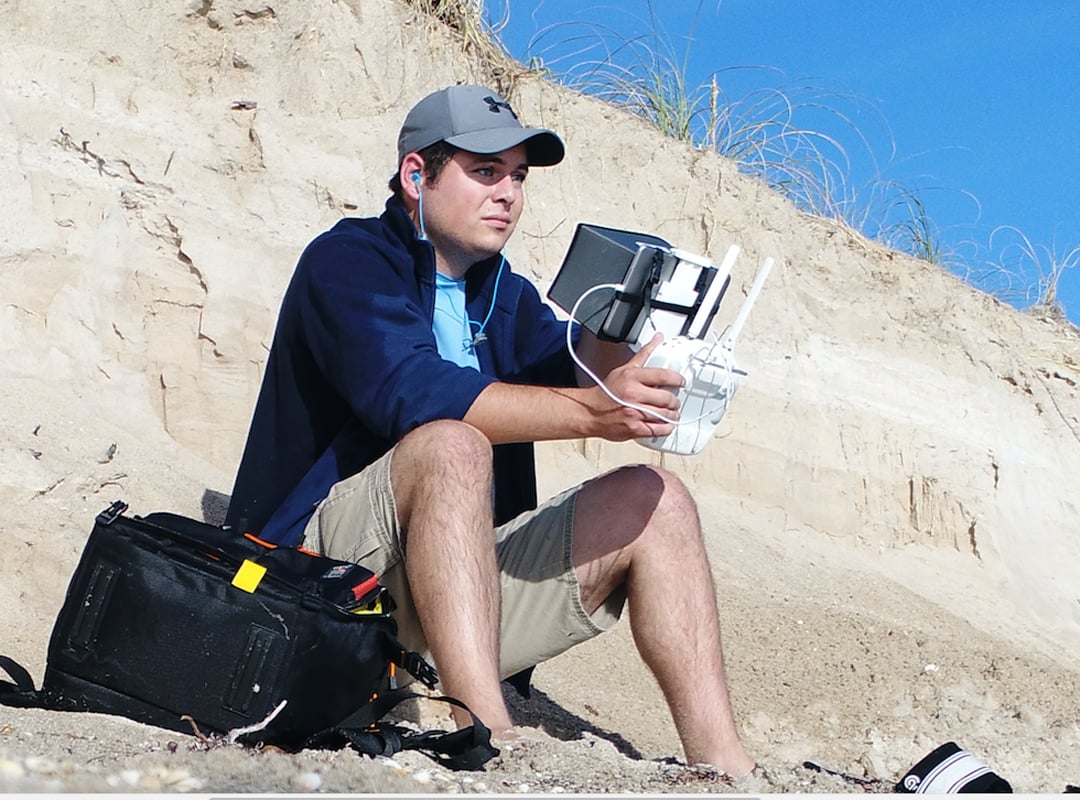The Sky’s the Limit
Winter has come and gone in Florida, and the human snowbirds have flown back up to their roosts in the North, and the annual migration of blacktip sharks (Carcarhinus limbatus) in the Western Atlantic have done the same. All winter, students were working diligently to collect data to learn more about this massive marine migration. One of our teams of students has been using aerial drones to capture the movements of the sharks nearshore. Because the blacktips aggregate nearshore here in Palm Beach County, FL; in crystal clear waters; we can use aerial drones to study their swimming mechanics in the wild.

Graduate researcher Braden Ruddy in the field collecting footage for analysis. Photo © Braden Ruddy
Drones have been used previously to study terrestrial animals, but here we use them to get a bird’s eye view of large marine apex predators. We are able to track individual shark movements in the water and learn about their ability to modulate swimming nearshore and perhaps understand the mechanics of a long-distance migration. We can measure variables such as swimming speed, tail beat frequency, and body curvature by analysing video footage. These data can then be compared to the data obtained by our lab’s tagging effort (see our previous blog on shark tagging). With the video footage captured, we are also able to learn about the structure of large shark aggregations, and the interactions that each individual shark has with another and with their environment.

Utilizing the Loggerpro software, we are able to track the shark’s movements point-by- point and frame-by-frame. Photo © Braden Ruddy
How do we do this? The lab utilizes a DJI Phantom 4 Pro, and sets the onboard camera to a high shutter speed and a narrow field of view. The flights are headed by our graduate researcher Braden Ruddy and undergraduate Madi Nelski. Braden and Madi head to the beach for 2-3 hour sessions where they use the drone to scan the water looking for aggregations of blacktips. Once sharks are located the drone hovers until the shark swims out of the frame. After these droning adventures, the video is brought back to the lab where it is broken down and analyzed frame by frame. We are able to analyze swimming movements of individual sharks point-by-point and frame-by-frame (See photos).
The crystal clear waters in Palm Beach County are perfect for filming blacktip sharks swimming in the wild using aerial drones.
Does a trip to the beach with your drone sound fun? We have developed a citizen science protocol for filming. If you use these setting and get some interesting video of marine critters let us know! Contact bruddy2018@fau.edu about submitting your drone footage.
We are able to take the video back to the lab and focus in on the movements of individual sharks for frame by frame analysis of swimming.
